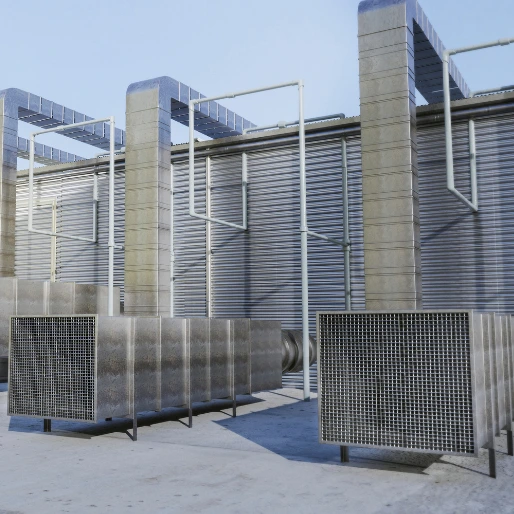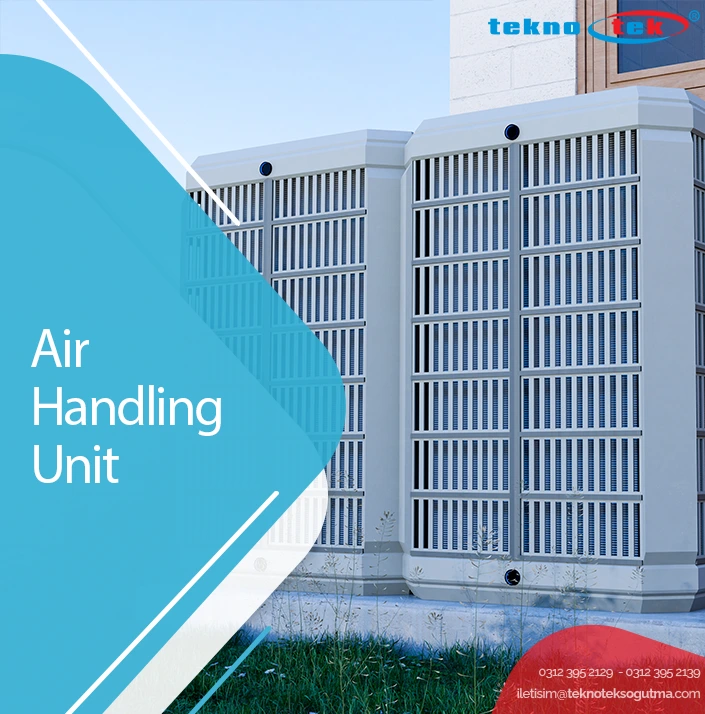Air handling unit is a ventilation and air-conditioning system used to condition the indoor air of a building, meaning it adjusts the air to the desired temperature, humidity, and cleanliness levels to ensure user comfort. These systems are large-scale. Their operating principle involves bringing in fresh air, filtering it, and then heating or cooling it. The system is commonly used in shopping malls, hospitals, factories, and office buildings with large indoor volumes.
Air handling unit consists of many components and can be designed in different configurations depending on usage requirements. Inside, there are filters, fans, heating and cooling coils, humidifiers, and silencers. This makes it possible to clean the air of particles and pollutants. With regular maintenance, these devices maintain indoor air quality while extending the system’s lifespan. In industrial facilities and public spaces, they are critical for ensuring employee productivity and comfort.
Advantages of using an air handling unit:
- Clean Air Supply: Filters dust, pollen, and particles from the air, contributing to a healthier indoor environment.
- Temperature Control: Keeps the indoor temperature at the desired level and provides seasonal comfort.
- Humidity Balance: Can humidify or dehumidify the air, allowing for the maintenance of the ideal humidity level.
- Energy Efficiency: Saves energy through heat recovery units, helping reduce operating costs.
- Air Circulation: Increases fresh air circulation in enclosed spaces and removes stale air.
- Wide Range of Applications: Effective in shopping malls, hospitals, factories, and large office spaces.
- Comfort and Productivity: Improves indoor air quality, which boosts employee productivity and user comfort.
- Modular Structure: Components can be added as needed, allowing for a flexible system design.
What is an Air Handling Unit?
An air handling unit is a central air-conditioning system used in buildings to improve air quality and maintain temperature and humidity balance.
Its function is not limited to just heating or cooling the air. It also filters the air, humidifies or dehumidifies it when necessary, and introduces fresh air from outside while expelling stale air. This creates a healthy, comfortable, and efficient environment for the area where it is used. The most common applications include office buildings, shopping malls, hotels, hospitals, industrial facilities, and schools.
These systems contain multiple components that work together, such as filters, fans, heating and cooling coils, mixing chambers, and silencers.
The working principle of an air handling unit involves drawing air from outside, filtering it, passing it through heating or cooling coils to adjust the temperature, and distributing it throughout the building with the help of fans. To improve energy efficiency, part of the indoor air can be recirculated depending on user needs.
In modern systems, heat recovery units play a significant role. These units recover energy from exhaust air and feed it back into the system, significantly reducing energy consumption.
Regular maintenance of buildings with air handling units ensures energy efficiency and maintains indoor air quality over the long term. For this reason, these systems are an essential part of modern building management and are also critical for sustainable construction.

When classifying air handling units, factors such as capacity, air flow rate, and filter type are taken into account. Project-specific requirements are also considered in this classification.
The first step is to determine whether the unit provides only ventilation or full air conditioning. Ventilation-type units simply filter and distribute fresh air from outside. Full air-conditioning systems, on the other hand, control all parameters, including temperature, humidity, and air quality.
The types of fans used also create differences between systems. Plug-fan systems stand out for their quiet operation and low energy consumption, while belt-driven systems are preferred in industrial applications requiring higher pressure. Filtration classes are another key factor; with G4, F7, or HEPA filters, it is possible to improve air quality, which is especially important for healthcare facilities and sensitive production areas.
For projects prioritizing energy savings, systems with heat recovery technology are chosen. Rotary heat exchangers, plate heat exchangers, or heat pipe models allow recovery of energy from exhaust air, preheating or precooling the fresh air.
Some units also have integrated humidifiers and cooling coils, which give them full air-conditioning capability.
For more information about air handling unit systems and types, you can contact Teknotek.

